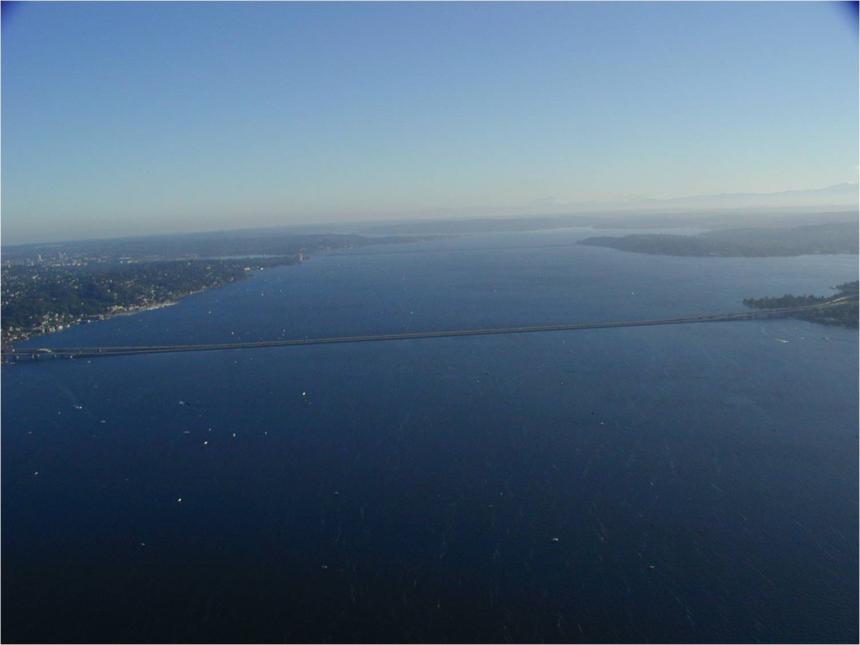Open to fishing year-round, this large lake between Seattle and Bellevue holds dozens of fish species, but the principal game fish attractions are Coastal Cutthroat Trout, Largemouth Bass, Smallmouth Bass, Yellow Perch, and Black Crappie. Note that there are several zone-fishing closures along the floating bridges, and a minimum size regulation to protect juvenile Steelhead Trout in the spring. Opportunities for Chinook, Coho, and Sockeye salmon are also available depending on the abundance of returning adults. Principal access ramps are at Kenmore, Magnuson Park at Sand Point, Gene Coulon Park in Renton, and Rainier Beach Park in Rainier Beach. Bank access is abundant.
Numerous fishing piers dot the perimeter of the lake. Some of the more popular piers near Kirkland are located in Waverly Park, Marina Park and at the Old Ship Museum Park. Near Renton, Gene Coulon Memorial Park offers public fishing piers, and a fishing pier is available in Seward Park on the south west side of the lake. On the north end of Mercer Island, Luther Burbank Park offers a fishing pier and boat docks for fishing.
The Washington State Department of Health (DOH) has issued these fish consumption advisories for Lake Washington: all groups (children and adult men and women), because of PCB contamination; do not eat any Northern Pikeminnow. All groups, because of mercury contamination; for Yellow Perch greater than 10.5 inches, eat no more than one meal (8 oz serving) per month; for Cutthroat Trout greater than 12 inches, eat no more than one meal per month; for Cutthroat Trout less than 12 inches, eat no more than three meals per month; for Largemouth and Smallmouth bass of all sizes, eat no more than two meals per month. See DOH's Fish page.
See the latest Sockeye salmon counts at the Ballard Locks.
See also: Public Fishing Piers of Lake Washington
Two-pole fishing is NOT allowed
Shoreline access: Good - Limited primarily to fishing piers and boat ramps.
Species you might catch
- Black crappie
- Brown bullhead
- Chinook salmon
- Coastal cutthroat trout (resident)
- Coho salmon
- Common carp
- Green sunfish
- Kokanee
- Largemouth bass
- Largescale sucker
- Northern pikeminnow
- Peamouth
- Pumpkinseed Sunfish
- Rock bass
- Signal crayfish
- Smallmouth bass
- Sockeye salmon
- Tench
- Threespine stickleback
- Yellow perch
Lake information
County: King
Acreage: 21933.60 ac.
Elevation: 17 ft.
Center: 47.601594, -122.275275
Open in Google Maps
Catchable fish plants
| Stock Date | Species | Number Released | Number of Fish Per Pound | Facility |
|---|---|---|---|---|
Visit the Catchable Trout Plants page for a more detailed search of trout plants in this or other bodies of water. To view or download the source data for this table visit the WDFW Fish Plants dataset on the Washington State Open Data Portal
Fishing prospects calendar
Coastal cutthroat trout (resident)
Kokanee
Largemouth bass
Smallmouth bass
Yellow perch
Black crappie
Pumpkinseed Sunfish
Brown bullhead
Northern pikeminnow
Photos
